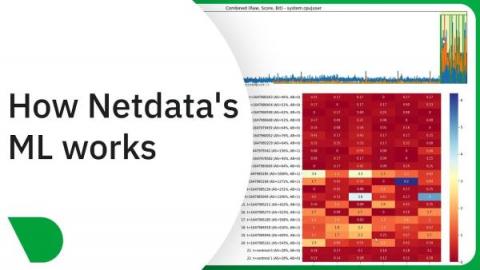Operations | Monitoring | ITSM | DevOps | Cloud
Technology
The latest News and Information on APIs, Mobile, AI, Machine Learning, IoT, Open Source and more!
Best practices to publish open-source software operators
Running or operating applications requires several tasks throughout their lifecycle: scaling instances, checking the health, integrating with other applications, running backups, and applying updates – to name a few examples. It’s a time and labour-intensive process. To automate these tasks, developers can implement scripts for repeated execution. This is where the software operator comes in.
How Is Machine Learning Used In AIOps?
When we think of computers, we typically think in terms of exactness. For example, if we ask a computer to do a numeric calculation and it gives us a result, we are 100% sure that the result is correct. And if we write an algorithm and it gives an incorrect result, we know we have coded improperly and it needs to be corrected. This exactness however, is not the case when dealing with Machine Learning. As a matter of fact, it is par for the course, that Machine Learning will be incorrect a percentage of the time.
Building a one-stop Open Source Observability Platform | OpenObservability Podcast
Improve your Playwright test's readability with steps
Automatically Convert Grafana Dashboards from InfluxQL to PromQL with a New Open Source Tool
It’s monitoring time. We all collect metrics from our system and applications to monitor their health, availability and performance. Our metrics are essentially time-series data collected from various endpoints. Then, it is stored in time series specialized databases, and then visualized in the metrics graphs we all know and love.
How Netdata's Machine Learning works
Following on from the recent launch of our Anomaly Advisor feature, and in keeping with our approach to machine learning, here is a detailed Python notebook outlining exactly how the machine learning powering the Anomaly Advisor actually works under the hood. Or if you’d rather watch a video walkthrough of the notebook then check out below. Try it for yourself, get started by signing in to Netdata and connecting a node.
How Netdata's machine learning works
Why Is IoT in Asset Management Solution Getting Popular Among Organizations?
These days technology is essential for businesses as their clients only want the best technology. Moreover, competition is high and having the best technology is significant for running daily operations successfully. Therefore, when an organization is equipped with a lot of assets in order to keep them maintained. In the market, there are several technologies available for effective asset management such as Barcode, QR Code, RFID, GPS, BLE, NFC, IoT, etc.
Debunking 4 Cybersecurity Myths About Machine Learning
Machine learning has infiltrated the world of security tooling over the last five years. That’s part of a broader shift in the overall software market, where seemingly every product is claiming to have some level of machine learning. You almost have to if you want your product to be considered a modern software solution. This is particularly true in the security industry, where snake oil salesmen are very pervasive and vendors typically aren’t asked to vigorously defend their claims.











